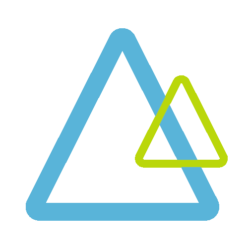Azure AI Engineer
An Azure AI Engineer uses Cognitive Services, Machine Learning, and Knowledge Mining to architect and implement Microsoft AI solutions involving natural language processing, speech, computer vision, bots, and agents.
Steps to get certified as Azure AI Engineer
- Prepare yourself for the exam with our online course at DataChangers Academy, mainly about Bots.
- Buy an exam voucher.
- Create a profile at https://microsoft.com/learning.
- Schedule your exam at https://microsoft.com/learning or directly from a Pearson VUE Test or Call Center.
NOTE FOR ALL LEARNERS
We are aware that our current online course is NOT covering all the exam topics. Therefore we are working very hard on an Azure AI Engineer (AI-100) exam preparation guide. If you want to keep informed about this guide, please sign up for our newsletter:
Exam Topics for Azure AI Engineer Associate
Analyze solution requirements (25-30%)
Recommend Cognitive Services APIs to meet business requirements
- select the processing architecture for a solution
- select the appropriate data processing technologies
- select the appropriate AI models and services
- identify components and technologies required to connect service endpoints
- identify automation requirements
Map security requirements to tools, technologies, and processes
- identify processes and regulations needed to conform with data privacy, protection, and regulatory requirements
- identify which users and groups have access to information and interfaces
- identify appropriate tools for a solution
- identify auditing requirements
Select the software, services, and storage required to support a solution
- identify appropriate services and tools for a solution
- identify integration points with other Microsoft services
- identify storage required to store logging, bot state data, and Cognitive Services output
Design AI solutions (40-45%)
Design solutions that include one or more pipelines
- define an AI application workflow process
- design a strategy for ingest and egress data
- design the integration point between multiple workflows and pipelines
- design pipelines that use AI apps
- design pipelines that call Azure Machine Learning models
- select an AI solution that meet cost constraints
Design solutions that uses Cognitive Services
- design solutions that use vision, speech, language, knowledge, search, and anomaly detection APIs
Design solutions that implement the Bot Framework
- integrate bots and AI solutions
- design bot services that use Language Understanding (LUIS)
- design bots that integrate with channels
- integrate bots with Azure app services and Azure Application Insights
Design the compute infrastructure to support a solution
- identify whether to create a GPU, FPGA, or CPU-based solution
- identify whether to use a cloud-based, on-premises, or hybrid compute infrastructure
- select a compute solution that meets cost constraints
Design for data governance, compliance, integrity, and security
- define how users and applications will authenticate to AI services
- design a content moderation strategy for data usage within an AI solution
- ensure that data adheres to compliance requirements defined by your organization
- ensure appropriate governance for data
- design strategies to ensure the solution meets data privacy and industry standard regulations
Implement and monitor AI solutions (25-30%)
Implement an AI workflow
- develop AI pipelines
- manage the flow of data through solution components
- implement data logging processes
- define and construct interfaces for custom AI services
- integrate AI models with other solution components
- design solution endpoints
- develop streaming solutions
Integrate AI services with solution components
- configure prerequisite components and input datasets to allow consumption of Cognitive Services APIs
- configure integration with Azure Services
- configure prerequisite components to allow connectivity with Bot Framework
- implement Azure Search in a solution
Monitor and evaluate the AI environment
- identify the ifferences between KPIs, reported metrics, and root causes of the differences
- identify the differences between expected and actual workflow throughput
- maintain the AI solution for continuous improvement
- monitor AI components for availability
- recommend changes to an AI solution based on performance data


